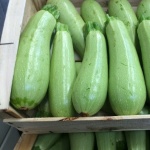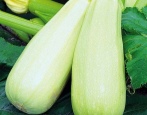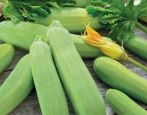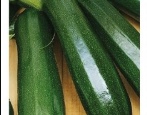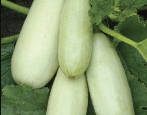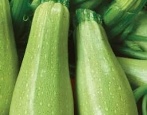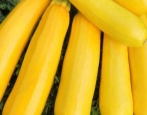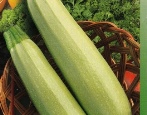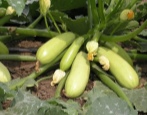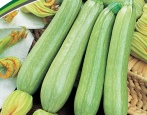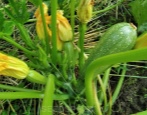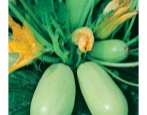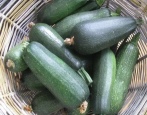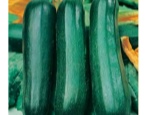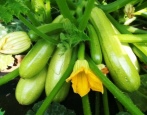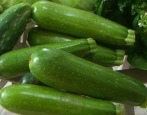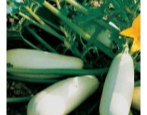
- Authors: Tarakanov G.I., Rakipova V.A., Gusev A.M., Novikova T.V., Andrievskaya S.A., Yanatiev V.P.
- Year of approval: 2008
- Ripening terms: early maturing
- The period from germination to harvest: 40-50 days
- Description of the plant: weakly branching, compact
- Leaves: medium, green, dissected
- Fruit shape: cylindrical
- Fruit color: dark green with green mottling
- Color of the pulp: light
- Pulp (consistency): dense, tender, a little sweet, juicy
Italian zucchini has long ceased to be a purely overseas phenomenon, despite its name. Domestic breeders are also actively developing new varieties of striped zucchini. One of the most interesting and already well proven varieties is Zebra.
Description of the variety
Zebra is a bush weakly branching zucchini marrow. Differs in simplicity of agricultural technology, activity and delicate taste. The variety was bred in Russia, included in the State Register in 2008.
Characteristics of the appearance of plants and fruits
The bush is compact, but spreading, strong, very noticeable. The main lash is short, the plant yields on 1-2 lateral lashes, which also do not grow long. Leaves are medium in size, green, with deep cuts along the edge, showy. The petioles are long.
Fruits are cylindrical, narrow, with small ribs, dark green with light green stripes along the ribs. Fruit length - from 12 to 30 cm, diameter - 10 cm, slightly expanding towards the end. The dark green part is covered with lighter spots of different sizes, which makes the skin look not only striped, but also painted. Fruit weight - from 900 grams to 1.1 kg. When gaining mass, zucchini tend to grow in length rather than width, do not tan, the flesh remains just as tender. Seeds are medium in size, white in color. The skin is elastic, strong, zucchini tolerates transportation well. Keeping quality is from 2 weeks to 4 months.
Purpose and taste
The taste is wonderful, light, fresh, pleasant. The pulp is firm and tender. Zucchini is versatile, suitable for fresh dishes, for all types of culinary processing. It is stewed, fried, frozen, dried and canned for the winter, pickled, and vegetable caviar is prepared from it.
Ripening terms
The variety is early maturing. Fruits can be removed 40-50 days after the emergence of mass shoots.
Yield
The yield is excellent, up to 699-744 c / ha, almost twice the standard Gribovskie 37. From 1 sq. m remove from 9 to 15 kg of fruit, depending on the care. You can get about 30 fruits per bush per season. The timing of harvesting the last fruits depends on the region. In central Russia, zucchini is obtained until the end of September, when it becomes too cold for the bushes.
Growing regions
The variety is recommended to grow in the Central Black Earth Region. However, domestic gardeners do not limit themselves. On warm heaps or beds, the zucchini manages to bear fruit well in any regions of the Russian Federation.
Growing and care
Zebra is a typical representative of the culture. Zucchini love sunny open places, spaciousness, even warm temperature, they tolerate a drop in temperatures up to + 5 ° C, they love abundant watering and feeding with organic matter. Even a beginner can handle agricultural technology:
- sowing seeds in soil warmed up to + 13-15 ° C is usually carried out at the end of May;
- weeding and loosening, watering as needed, inspection;
- as soon as the third real leaf appears, the seedlings are fed with mullein solution (1 liter per 10 liters of water, 1 liter of solution for each bush);
- after 2 weeks, the zucchini begin to bloom, and they are fed a second time with a complex mineral fertilizer with an increased content of phosphorus and potassium;
- continue to water abundantly if the weather is dry;
- the first fruits are harvested after another 2 weeks, but you can pick them a little earlier;
- spend 1 more fertilizing with mineral fertilizer at will.
Watering is carried out only with warm water, preferably in the early morning. The soil should be at least 30-40 cm wet. For 1 sq. m, 10 liters of water are required, after the formation of ovaries, they are watered more abundantly - 20 liters per 1 sq. m. If the gardener does not have the ability to water as needed, the soil is mulched with a layer of humus or sawdust by 2 cm.
In temperate summers with frequent rains, zucchini can grow well without watering, it is enough to water only young seedlings. In dry summer, watered daily. The average frequency of watering in normal weather with periodic rains is once a week. If the weather is very damp, it is useful to place a canopy over the zucchini.
The cultivar does not need shaping, flower cutting or leaf thinning. Petioles are long, leaf plates do not close, insects always have access to flowers.
Medium fruits are taken for storage, not small and not overgrown. Such fruits emit a dull sound when knocked on. The skin should be intact, without damage or scratches. You can't wash. It is dried in a bright place for 10 hours, then stored in a dry and moderately warm place with an air humidity of 50% and an air temperature of + 18-20 ° C. Under these conditions, zucchini Zebra do not change their properties for 6 weeks.
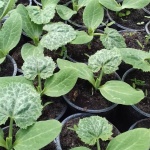
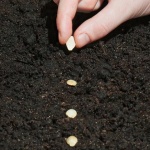
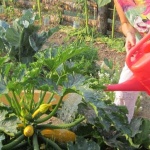
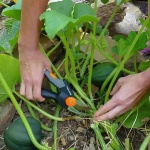
Soil requirements
Zucchini like loose, well-drained, highly nutritious neutral soil. Acidic soils are necessarily deoxidized by adding dolomite flour, chalk, hydrated lime or wood ash. The soil is abundantly flavored with compost, since the squash loves oily soils.
They are very fond of zucchini high ridges of layers of sticks, grass and garden soil. A nutrient mixture of dry manure, eggshells and ash is poured into the wells. Such heaps do not require loosening, weeding and feeding, the plants get everything they need from decaying residues. From time to time, heaps are thoroughly spilled with warm water, and this is where the care of the plant ends. All that remains is to harvest regularly.
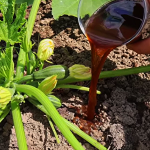
Disease and pest resistance
The variety is resistant to powdery mildew and is practically not affected by pests. In the summer, with alternating heavy rains and droughts, any zucchini is more susceptible to bacterial diseases. As a preventive measure, plants are sprayed and the soil is shed with "Fitosporin" and / or ash infusion. Especially carefully when growing this zucchini, you should approach the preparation of the soil. Loose breathable soil dries out faster even in wet weather.
Review overview
The variety is liked by everyone who tried to plant it. Very unpretentious and lively.The fruits grow quickly, the zucchini feels great in partial shade. Productivity is highly dependent on conditions. With rare collection and occasional watering, 2-3 large zucchini are removed from the bush. If you harvest on time, water and feed abundantly, you can get dozens of fruits with tender pulp. There are complaints about the germination of seeds, but this is always due to the too cold temperature during the planting period. Domestic gardeners do not like to send zucchini for storage, they prefer fresh vegetables or pickled ones, so the keeping quality of the Zebra variety cannot be evaluated according to reviews. The variety will be of interest to anyone looking for a particularly fruitful, tasty and unpretentious zucchini.
